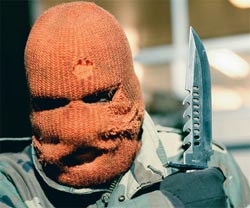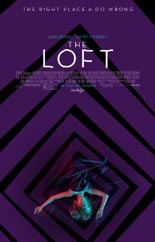
 There must be something to the story of The Loft to justify three screen versions: the 2008 Belgian original, followed by a Dutch remake two years later, and now an all-American take, because this country is the land of the free, home of the brave and ground zero for the lecherous. Whatever that “it” is that merits cinematic Xeroxing is not present in this ol’ Hollywood try, despite importing the first film’s director, Erik Van Looy.
There must be something to the story of The Loft to justify three screen versions: the 2008 Belgian original, followed by a Dutch remake two years later, and now an all-American take, because this country is the land of the free, home of the brave and ground zero for the lecherous. Whatever that “it” is that merits cinematic Xeroxing is not present in this ol’ Hollywood try, despite importing the first film’s director, Erik Van Looy.
Its icky premise: At the behest of bad-boy architect Vincent (Karl Urban, Dredd), his four best buds — all married — join him in sharing a swanky, high-rise apartment where they may philander to their dicks’ content. One dubs it a “fuck pad,” which is a dead-on description and would make for a better title. Their cheating ways come to a halt when Luke (Wentworth Miller, TV’s Prison Break) enters to find a lifeless woman’s body — nude, bloodied and handcuffed to the bed.
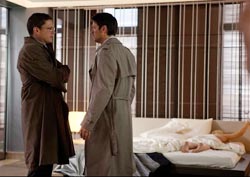 If not for all the flashbacks, The Loft practically could pass for a stage play, as the bros reassemble at Chez Syphilis to argue at length over which one of them snapped and stabbed her. (They seem less concerned with the why.) Was it the stray-reluctant Chris (James Marsden, X-Men: Days of Future Past)? Perhaps his cokehead, hothead half-sib, Phil (Matthias Schoenaerts, Bullhead)? Or maybe the ever-sloshed, overweight Marty (Eric Stonestreet, TV’s Modern Family)?
If not for all the flashbacks, The Loft practically could pass for a stage play, as the bros reassemble at Chez Syphilis to argue at length over which one of them snapped and stabbed her. (They seem less concerned with the why.) Was it the stray-reluctant Chris (James Marsden, X-Men: Days of Future Past)? Perhaps his cokehead, hothead half-sib, Phil (Matthias Schoenaerts, Bullhead)? Or maybe the ever-sloshed, overweight Marty (Eric Stonestreet, TV’s Modern Family)?
To the movie’s credit, the answer is not immediately apparent, because Van Looy and screenwriter Wesley Strick (1991’s Cape Fear) have packed their Loft with more twists than Chubby Checker’s discography. Of course, that also means the mystery-thriller of rampant infidelity hits new heights of preposterousness, making it fun for the viewer to watch credibility dig its own grave. Even when it’s bad, the movie looks good; Van Looy has shot it to resemble virtually every dark-hued, full-page fashion ad in the September issue of Vogue. All you’re missing are the tipped-in subscription cards, because if you concentrate hard enough, you’ll swear you can smell the perfume strips. —Rod Lott

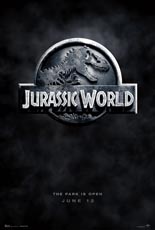
 You cannot trust an old and filthy-rich white guy. After being responsible for the deaths of several people in his employ — and quite nearly his two adorable grandchildren — John Hammond sure had learned his DNA-manipulating lesson by the end of 1993’s
You cannot trust an old and filthy-rich white guy. After being responsible for the deaths of several people in his employ — and quite nearly his two adorable grandchildren — John Hammond sure had learned his DNA-manipulating lesson by the end of 1993’s 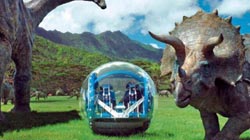
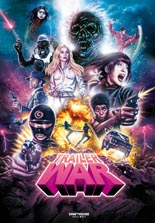
 No war is to be fought with
No war is to be fought with 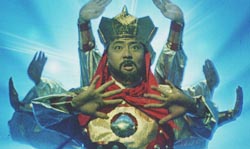
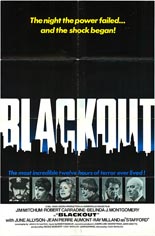
 Time and time again, the movies prove that drivers for any given state’s Department of Corrections are the worst. Fifteen years before the best example of this —
Time and time again, the movies prove that drivers for any given state’s Department of Corrections are the worst. Fifteen years before the best example of this — 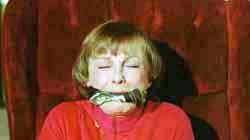
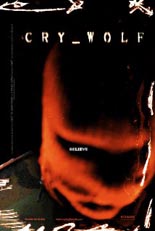
 While the hero of
While the hero of 